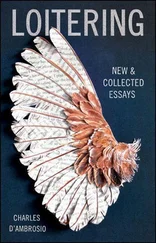By its very nature, such a book should be untranslatable. And yet it was soon to become a part of all the main cultures of the world and to touch millions of readers in many different languages.[21] What is the power latent in the original that enables it to survive translation and to remain operative, even in a mutilated form? Les Misérables has a mythic dimension that directly taps into the deeper sources of our common humanity. It is popular literature in the same sense as Homer is popular literature: it addresses all mankind.
The book was first printed in Brussels (1 April 1862); other editions immediately followed, nearly simultaneously, in Paris, Madrid, London, Leipzig, Milan, Naples, Warsaw, Saint Petersburg, Rio de Janeiro.[22] From the start it exerted a universal appeal: the original publication was delayed at the printers by the tears of the typographers who were reading and composing the galley proofs. Their emotion and enthusiasm were soon to be shared by the most diverse readership — French and foreign, young and old, naïve and sophisticated. At the remotest end of Europe, Tolstoy secured without delay a copy of the book and was overwhelmed. One may say without exaggeration that Les Misérables triggered War and Peace .[23] Giants breed giants.
* * *
Hugo’s prodigious creativity during the years of exile found another outlet — more intimate, but no less intense and powerful — in his pictorial activity. Though critics have not ignored it, it seems to me that this aspect of his genius has remained somehow underestimated. For instance, instead of talking of Hugo’s drawings, it would be much more accurate to speak of his paintings — borrowing a concept from Chinese traditional aesthetics, which would be particularly appropriate in his case.[24] For the Chinese, all the graphic improvisations, or “ink-plays” which scholars and literary men execute during their leisure hours, simply using the basic tools they need for their daily writing (calligraphic brush, ink and paper) are not only considered as fully fledged paintings but, more than the large-scale, showy productions of professional artists, they achieve the very perfection of what a true painting should always aim at: they are a visible “imprint of the heart” of the painter.
Delacroix said that the highest feat for a painter is to inject reality into a dream.[25] Here lies precisely the haunting power of Hugo’s visionary works: his imagination, however bold and wild, was always sustained by a technical proficiency acquired through a long practice of sketching. (During his early journeys through Belgium and Germany, Hugo recorded with vivid accuracy, in pen or pencil, monuments and scenic spots: his sketch books were to him what cameras have become for today’s travellers.)
Hugo said that “every great artist, at his beginning, remakes the whole art to his own image.” This is particularly true for Hugo’s paintings. Most of these were not shown in his time, and for good reason: the public for such an art was not yet born. It is only now, through a familiarity with the developments of twentieth-century painting, that we are able at last to appreciate Hugo’s graphic experiments.
Hugo’s exile came to an end with the fall of the Second Empire. His return to France was triumphal, and the last fifteen years of his life were one long protracted apotheosis. He continued to produce: poems, political addresses, polemical essays (the eloquence and ferocity of Histoire d’un crime —1877—contributed to saving the Republic from the menace of a new coup), and one last magnificent novel, Quatre-vingt-treize . But not even death could put an end to his career: posthumous publication of his private papers (notebooks, drafts, prose and verse fragments, diaries, correspondence, etc., which equal the published works in quantity, and sometimes even exceed them in interest) have occupied another three-quarters of a century.
* * *
Four years ago, Graham Robb published a splendid biography of Balzac. He has now applied the same winning methods — sharp judgement, wit, lively style and vast information — to the writing of a new biography of Hugo. If his Victor Hugo does not afford the same delights as Balzac, it is, I think, through no fault of the biographer. It simply would be unfair, and foolish, of us to expect that the same methods applied to a different object may achieve identical results.
Balzac is an essentially endearing character. But if one had to characterise Hugo’s multi-faceted personality, a hundred adjectives may come to mind, yet “endearing” would certainly not be one of them. In fact, it is precisely when dealing with figures such as Hugo that one feels obliged once again to question the desirability, if not the very feasibility, of literary biography.
It is not simply that giants do not bear close scrutiny (as Gulliver discovered to his utter discomfort when he had to climb into the bosoms of the court ladies of Brobdingnag) but, more essentially, there is this basic truth: the only thing that could justify our curiosity is precisely what must necessarily escape the biographer’s analysis — the mystery of artistic creation. Hugo’s long exile was the climax of his life, but these momentous twenty years could be described in merely one sentence: He stood in front of the ocean and he wrote.§
The thesis that literary biography is doomed to fail by its very nature is not new, and creative artists have expounded it most persuasively. Proust wrote an entire treatise on the subject, Contre Sainte-Beuve , and it would be rather fatuous for me to attempt rehashing it here. Closer to us, Malraux summed up the issue quite pointedly: “Our time is fond of unveiling secrets — first because we seldom forgive those whom we admire; secondly, because we vaguely hope that, amid these unveiled secrets, we may find the secret of genius. Under the artist, we wish to reach the man. But when you scrape a fresco, if you scrape it down to its shameful bottom layer, all you get in the end is mere plaster.”[26] But well before him the indignation that a poet must experience before our indiscreet appetite for biographical information was most memorably expressed by Pushkin: “The mob reads confessions and notes, etc., so avidly because in their baseness they rejoice at the humiliations of the high and the weaknesses of the mighty. Upon discovering any kind of vileness they are delighted. He’s little like us! He’s vile like us! You lie, scoundrels: he is little and vile, but differently, not like you.”[27]
Note that I am quite aware of my own contradictions. If my readers derive any enjoyment from this little article, they should also keep in mind that a great deal of its information was directly drawn from Robb’s work. And even as I question the point of writing literary biographies, I know all too well that I shall continue to read them — especially when they are as intelligent and readable as this one.
* Review of Graham Robb: Victor Hugo: A Biography (New York: Norton, 1997).
† My italics.
§ Hugo used to write standing at a high desk.
VICTOR SEGALEN REVISITED THROUGH HIS COMPLETE CORRESPONDENCE
WHEN VICTOR Segalen died in 1919 at the age of forty-one, he had published only one book, Les Immémoriaux (1907), and two slim collections of poetry, Stèles (1912) and Peintures (1916), and he was barely known beyond a small circle of intimates.[1] His widow Yvonne — a devoted wife who had supported and loved him with intelligence and followed him with courage — strove to preserve his memory by arranging for posthumous publication of two manuscripts, René Leys (1922) and Équipée (Expedition, 1929). Despite her efforts, it was to be feared that the writings and even the name of the poet were doomed to oblivion.
Читать дальше












